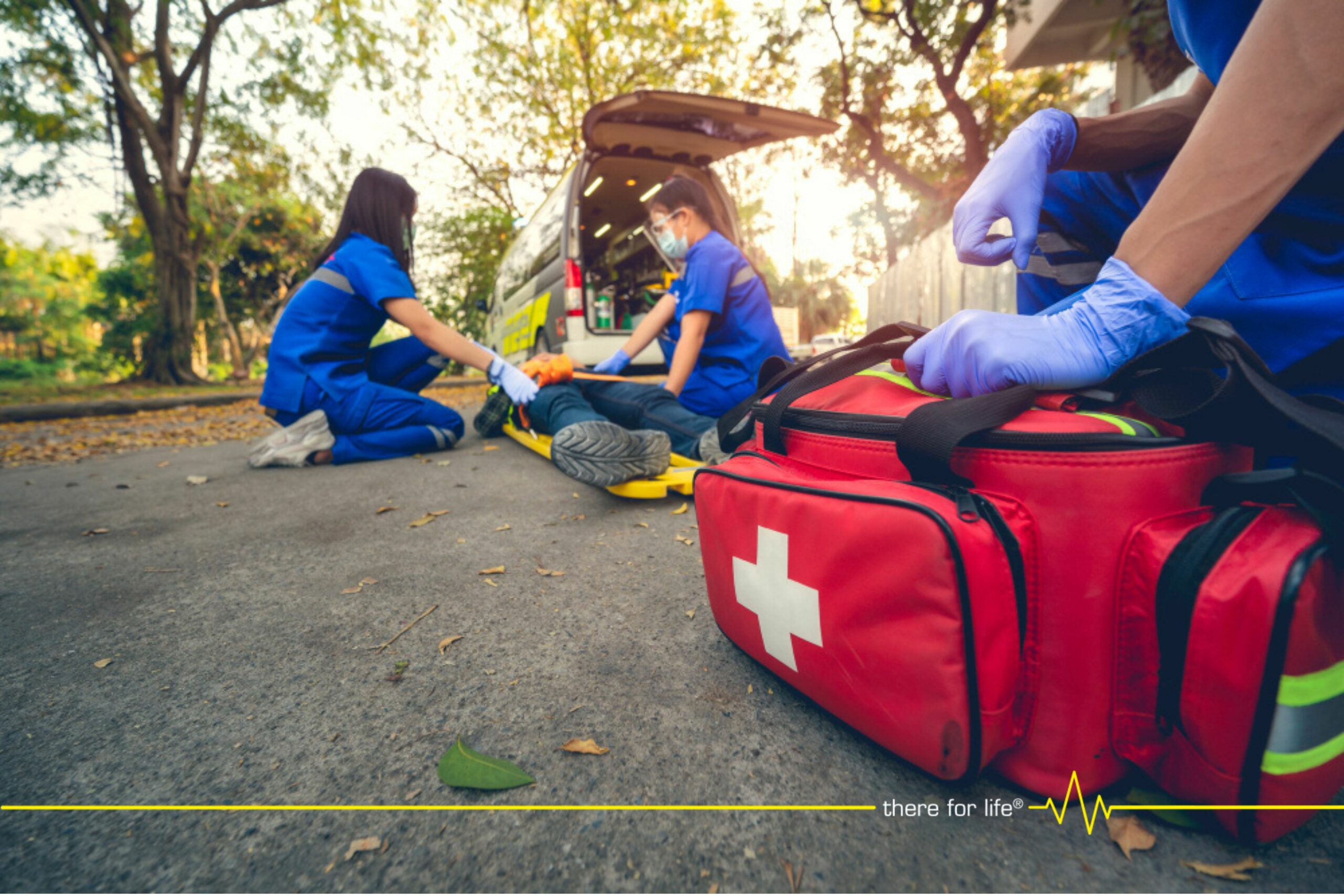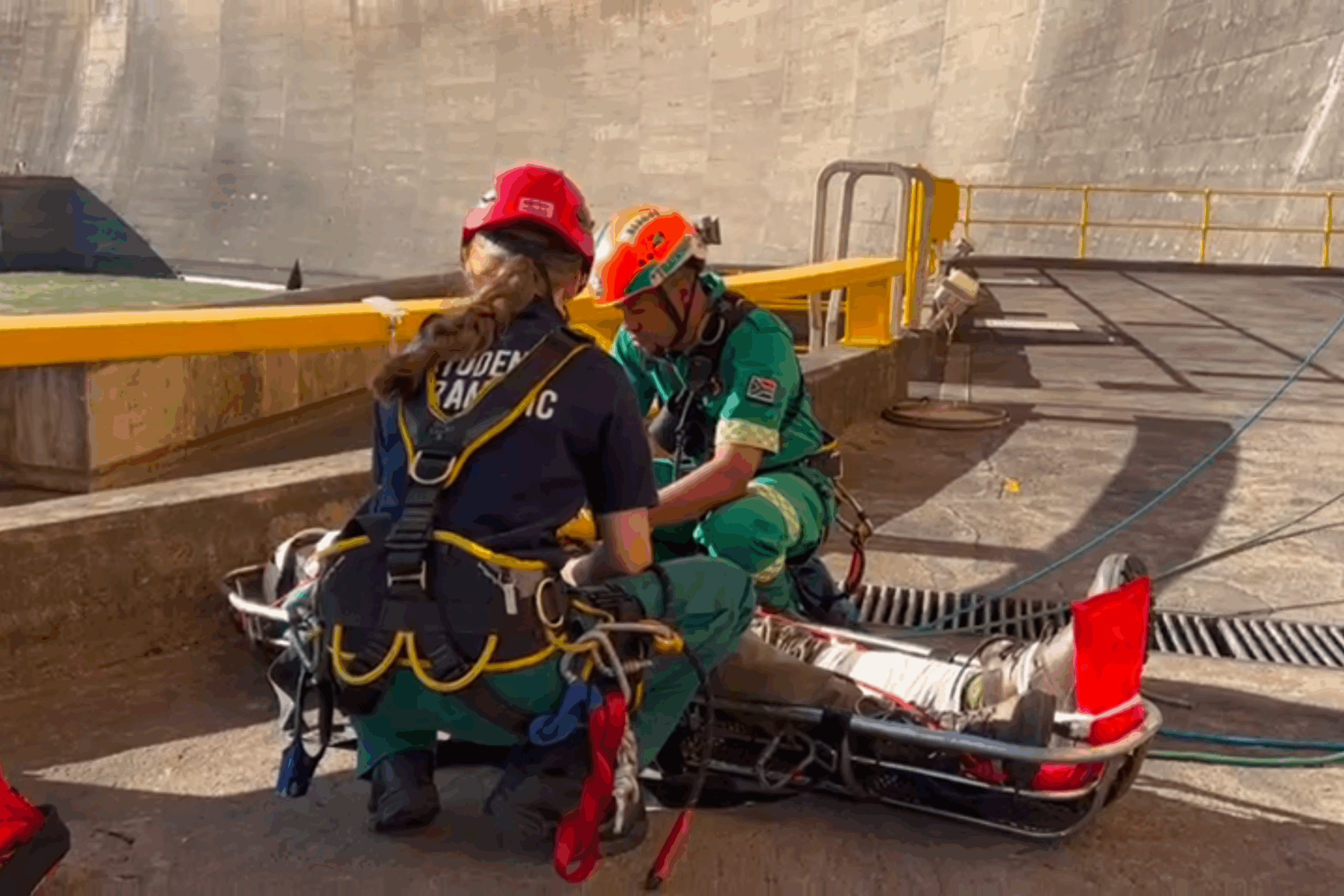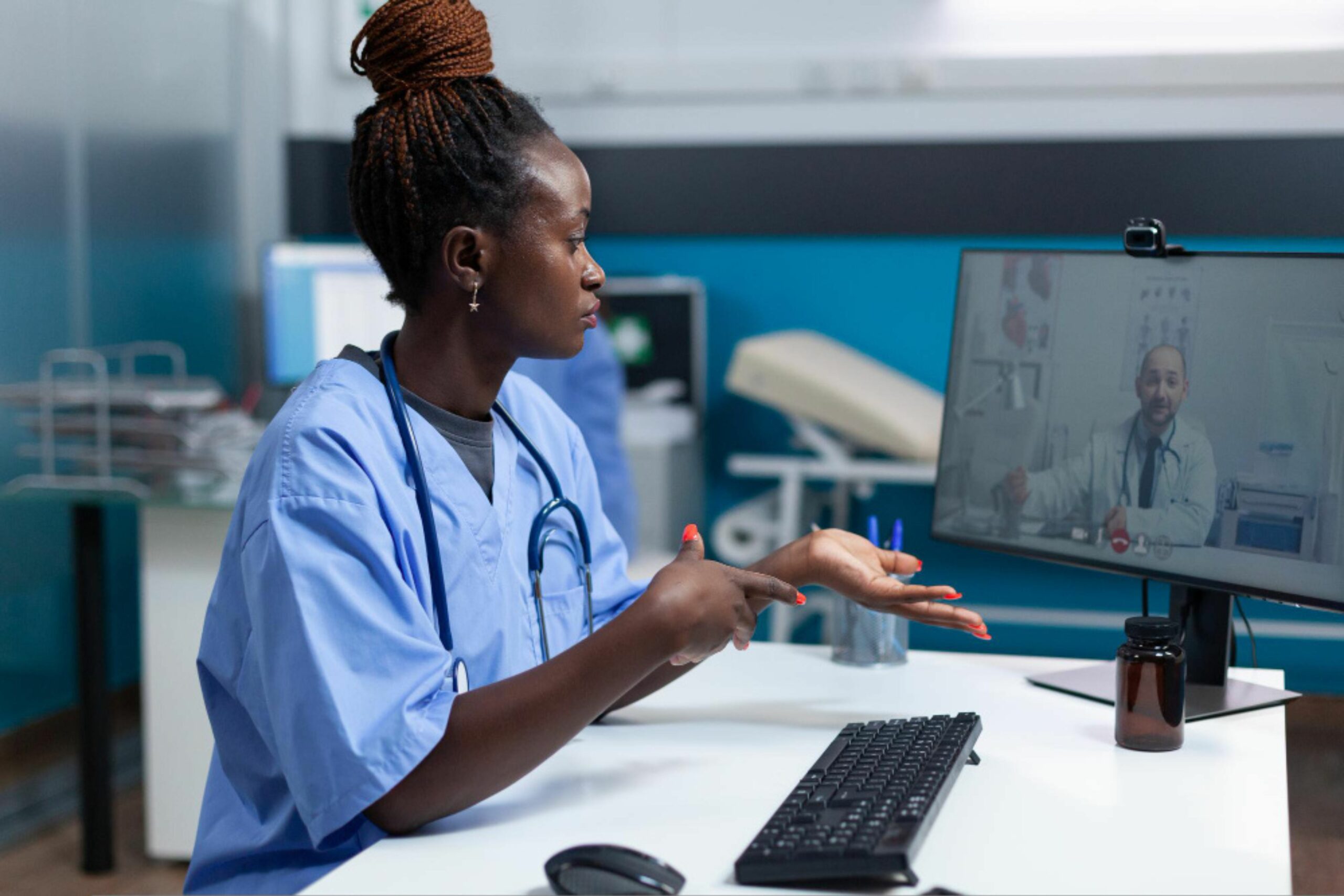Risk management in emergency medical care on remote project sites involves identifying, assessing, and mitigating potential risks and hazards that can impact the health and well-being of individuals working on remote Greenfield or existing project sites. This is crucial because remote project sites often lack immediate access to advanced medical facilities, making it necessary to have a well-prepared and organised approach to handle medical emergencies related to accidents, injuries and illnesses. Below, we unpack risk management’s role in emergency medical care and the importance of having this on remote project sites.

The Role of Risk Management in Emergency Medical Care
As a multinational corporation, ensuring you have the policies, protocols and procedures to minimise on-site risks directly impacts your duty of care responsibilities. With such importance placed on risk management, many multinational corporations are turning to specialist healthcare management providers with the knowledge and expertise to ensure the right risk management processes, procedures and regulations are followed. One such provider is ATA International Holdings. ATA International Holdings can assist you in identifying potential risks and endangerments in emergency medical settings to ensure the following:
- Timely Response to Emergencies – Access to emergency medical care may be limited on remote project sites. Identifying potential risks allows for better preparation and faster response times, potentially saving lives in critical situations.
- Efficient Resource Allocation – Remote project sites often have limited resources, including medical supplies and personnel. Knowing the potential risks allows for better resource allocation and planning, ensuring that the right equipment and staff are available when needed.
- Preventive Measures – Identifying these risks enables the implementation of preventive measures to reduce the likelihood of emergencies. This can include training, the installation of medical equipment, and regular health check-ins.
- Legal and Regulatory Compliance – Compliance with regulations and standards is essential in any healthcare setting. Identifying and addressing risks ensures that the facility or project site complies with relevant regulations, reducing the risk of legal and financial repercussions.
- Ensuring Quality of Care – Understanding potential risks allows healthcare providers to deliver a higher quality of care. They can anticipate complications, plan for them, and provide more effective treatment.
- Positive Patient Outcomes – Identifying risks and endangerments can directly impact patient outcomes. Early recognition and response to potential issues can prevent complications and improve the chances of a positive outcome for patients.
- Reputation Management and Stakeholder Confidence – In remote project sites, healthcare facilities often serve as a critical support system for the workforce. Ensuring preparedness can boost the reputation of the project site and inspire confidence among stakeholders, including employees, investors, and local communities.
- Emergency Preparedness – Identifying potential risks is fundamental to emergency preparedness. In remote areas where help may be far away, having a well-prepared response plan is essential to mitigate the impact of emergencies.
- Cost Savings – Proactively identifying and addressing risks can result in cost savings in the long run. It can prevent expensive medical interventions, reduce downtime due to accidents or injuries, and lower insurance premiums.
Identifying potential risks and endangerments in emergency medical settings in remote project sites is crucial for safeguarding the well-being of medical personnel and patients, ensuring efficient resource utilisation, complying with regulations and ultimately improving the quality of care and the overall success of the project site.
The Pillars of Effective Risk Management in Emergency Medical Care
From the above, it is clear that risk management is essential for the success of a remote project site, especially where emergency medical care is concerned. For risk management to be effective, it is necessary to review all four risk management pillars mentioned below.
Pillar 1: Risk identification
Risk identification is a crucial step in the risk management process for emergency medical care. It involves identifying and assessing potential risks and hazards that can affect the delivery of emergency medical services. Risk identification aims to proactively identify these risks so that they can be analysed, prioritised, and mitigated to ensure the health and well-being of workers and healthcare providers. These risks include the following:
- Hazard Identification – The first step is identifying all potential hazards and risks associated with emergency medical care. These can include factors such as the medical conditions of patients, environmental conditions, equipment failures, and human errors.
- Patient Healthcare Risks – Identify risks related to patient healthcare, such as misdiagnosis, medication errors, communication breakdowns, and delays in treatment.
- Healthcare Provider Risks – Identify risks that healthcare providers may face, including exposure to infectious diseases, physical injuries, and psychological stress.
- Environmental Risks – Consider environmental factors that may impact emergency medical care, such as severe weather conditions, natural disasters, or transportation issues.
- Equipment and Technology Risks – Evaluate the reliability of medical equipment, communication systems, and other technology used in emergency medical care.
- Legal and Regulatory Risks – Be aware of the legal and regulatory risks related to compliance with healthcare laws and regulations. Non-compliance can lead to legal issues and liabilities.
- Resource Constraints – Identify risks related to resource limitations, such as shortages of medical supplies, personnel, or facilities.
- Incident History – Review past incidents to learn from previous experiences and identify recurring patterns or areas where improvements are needed.
Pillar 2: Risk Assessment
Once the risks are identified, they need to be assessed regarding their potential impact and likelihood. Remote projects may have risks, which is why several risk assessment tools are utilised to help plan for emergencies and allocate resources effectively. Examples of some of the standard risk assessment tools and approaches used in such situations include:
Failure Modes and Effects Analysis (FMEA):
- FMEA is a structured approach to assess the failure modes of equipment, systems, or processes that could lead to emergencies.
- It helps prioritise preventive measures and contingency plans to address potential failures.
Hazard and Operability Studies (HAZOP):
- HAZOP is a systematic technique used to identify and assess potential hazards and deviations from the intended operation of a system or process.
- It is valuable for evaluating risks in complex systems, such as remote project sites with multiple interconnected processes.
Geographical Information Systems (GIS):
-
- GIS technology can be used to map and analyse geographical data relevant to remote project sites, including terrain, climate, and potential hazards like landslides or flooding.
Risk assessment tools and methodologies should be tailored to each remote project site’s specific characteristics and challenges. Regular reviews and updates of risk assessments are essential to adapt to changing conditions and lessons learned from previous incidents.
Pillar 3: Risk mitigation
After identifying, assessing, and prioritising risks, a plan for mitigating or managing them needs to be developed. This includes outlining strategies and actions to reduce the likelihood and impact of identified risks. For remote projects, this might involve establishing robust communication protocols, implementing training sessions, or contingency planning. Below are some of the risk mitigation strategies and tools that can be implemented for effective risk management on remote project sites:
- Emergency Response Plans – Develop and communicate well-defined emergency response plans that include evacuation procedures, medical support, and contact information for local authorities.
- Supply Chain Diversification – Diversify your suppliers and maintain a buffer of stock, specifically critical materials, to reduce the risk of supply chain disruptions due to logistical challenges or unexpected events.
- Local Partnerships – Establish partnerships with local governments, companies or organisations that have knowledge of the area, including political, social, and economic factors. They can provide valuable insights and support during emergencies.
- Insurance Coverage – Ensure that your project has adequate coverage for potential risks, such as natural disasters, equipment breakdowns, and third-party liabilities.
- Health Protocols – Develop and enforce strict health protocols to minimise the risk of accidents and injuries on the project site. Regular safety training and audits are crucial.
- Contingency Planning – Create contingency plans that outline how to respond to specific risks and unexpected events.
- Remote Site Audit – Regularly audit and inspect remote project sites to identify potential risks and ensure that all health and emergency medicine measures are in place.
Effective risk management on remote project sites requires a proactive and multifaceted approach. Each strategy should be tailored to the specific challenges and conditions of the unique project site to maximise its effectiveness.
Pillar 4: Risk monitoring and evaluation
Monitoring and tracking in risk management for emergency medical care on remote project sites involves the continuous surveillance and assessment of potential risks and ongoing activities related to providing medical care in remote or isolated locations. Here’s what monitoring and tracking encompass in this context:
- Medical Equipment and Supplies – Continuously monitor the availability, functionality, and condition of medical equipment and supplies. Regular inspections should be conducted to ensure that essential medical equipment, such as defibrillators and medications, are well-maintained and up-to-date.
- Personnel Availability – Track the availability and scheduling of medical personnel, including doctors, nurses, paramedics, and support staff. Ensure that there is adequate coverage and that personnel are adequately trained and certified for the specific needs of remote emergency medical care.
- Patient Records – Maintain accurate and up-to-date patient records. This includes documenting patient medical histories, treatment plans, medications administered, and any changes in the patient’s condition.
- Emergency Response Plans – Regularly review and update emergency response plans and protocols. Ensure that all team members are familiar with these plans and can execute them effectively in case of medical emergencies.
- Patient Health – Routinely assess the health status of individuals in the remote project site. This includes conducting regular health check-ups, responding to health complaints, and providing preventive care when necessary.
- Emergency Drills and Training – Conduct regular drills and training exercises to ensure the medical team is well-prepared to handle various emergency scenarios. Practice responding to different medical situations that may arise in remote environments.
- Continuous Improvement – Continuously seek opportunities to improve emergency medical care’s quality and efficiency in remote project sites based on feedback, lessons learned, and best practices.
- Data and Reporting – Establish a system for collecting and reporting medical data, incidents, and outcomes. This data can be used for performance evaluation, quality improvement, and risk analysis.
Effective monitoring and tracking in the context of emergency medical care on remote project sites are essential for ensuring timely and appropriate medical interventions, minimising risks, and ultimately saving lives in challenging and isolated environments. Regular reviews and updates to the monitoring and tracking processes are necessary to adapt to changing circumstances and enhance the overall effectiveness of medical care delivery.
Key Components of a Risk Management Program in Emergency Medical Care
Remote project sites often lack immediate access to advanced medical facilities. Having well-defined policies and protocols ensures that the safety and well-being of project personnel are prioritised. This is a critical component of a risk management program in emergency medical care.
These policies and protocols establish a standardised approach to emergency medical care. This consistency is essential, especially in high-stress situations, as it helps ensure that the correct procedures are followed every time. Clear protocols help in quick decision-making during emergencies. They outline the steps to be taken, the chain of command, and the communication procedures, allowing for a faster response to medical incidents. This is often summarised in a MERP, which stands for Medical Emergency Response Plan.
The MERP is a comprehensive plan that outlines how medical emergencies will be managed on remote project sites. MERP outlines specific procedures and protocols to follow in the event of a medical emergency. This includes how to alert medical personnel, the steps to take to stabilise the patient, and how to coordinate medical evacuations if necessary. These procedures are critical for ensuring a timely and effective response to emergencies. The benefits of having these procedures and protocols in place as part of the MERP include:
- Enhanced patient well-being and outcomes
- Reduced medical errors and adverse events
- Improved response times and decision-making
- Minimised patient harm and preventable complications
Conclusion
From the above, it is clear that risk management plays a critical role in emergency medical care and is essential to ensuring worker health and wellness. Risk management involves the assessment and identification of potential risks and the strategies aimed to mitigate these risks. Putting a risk management program together takes immense skill, expertise and knowledge and requires the assistance of an experienced healthcare management service provider such as ATA International Holdings. For more on ATA International’s healthcare management solution and how this assists in risk management and mitigation, visit: https://ata-international.com/services/on-site-medical-staff/


